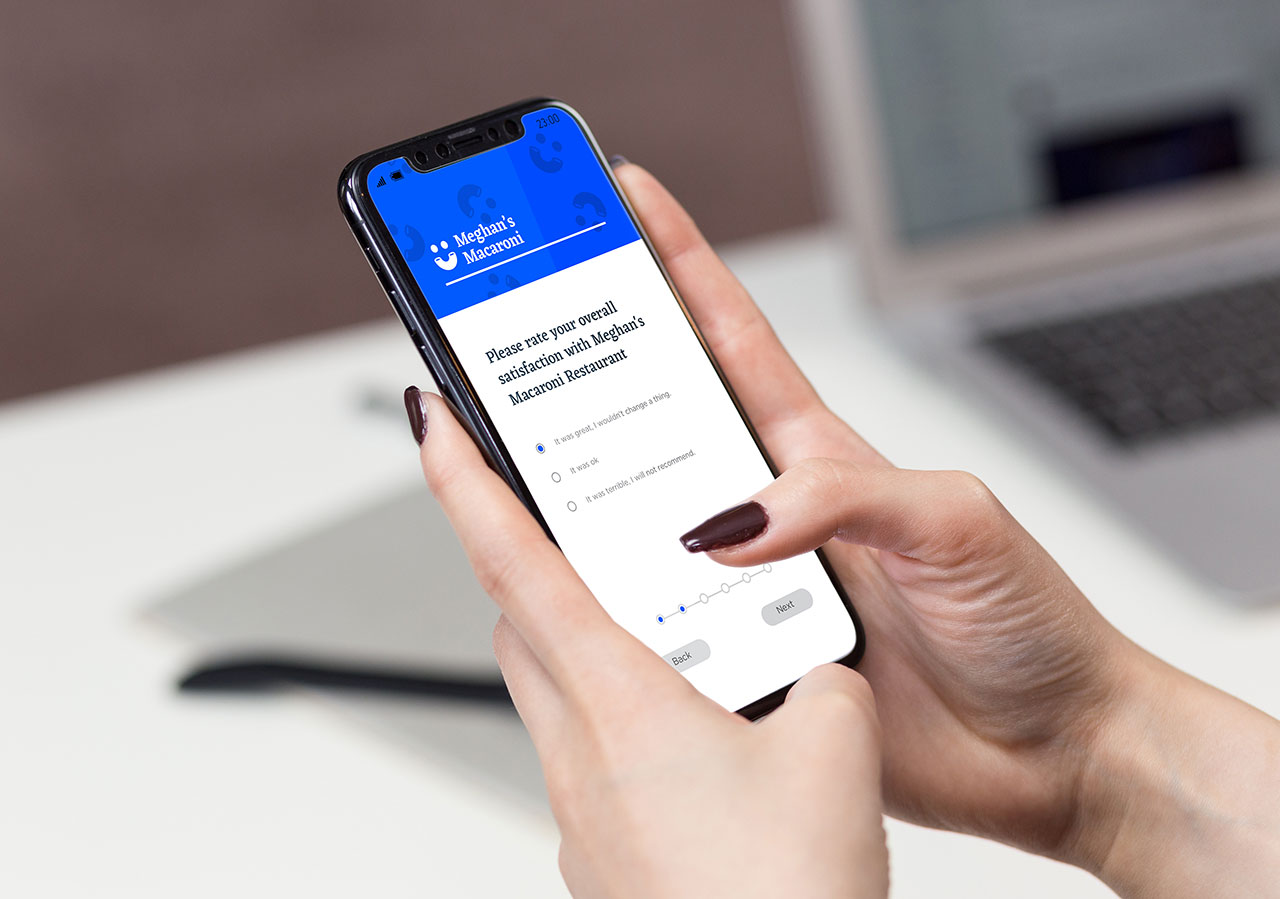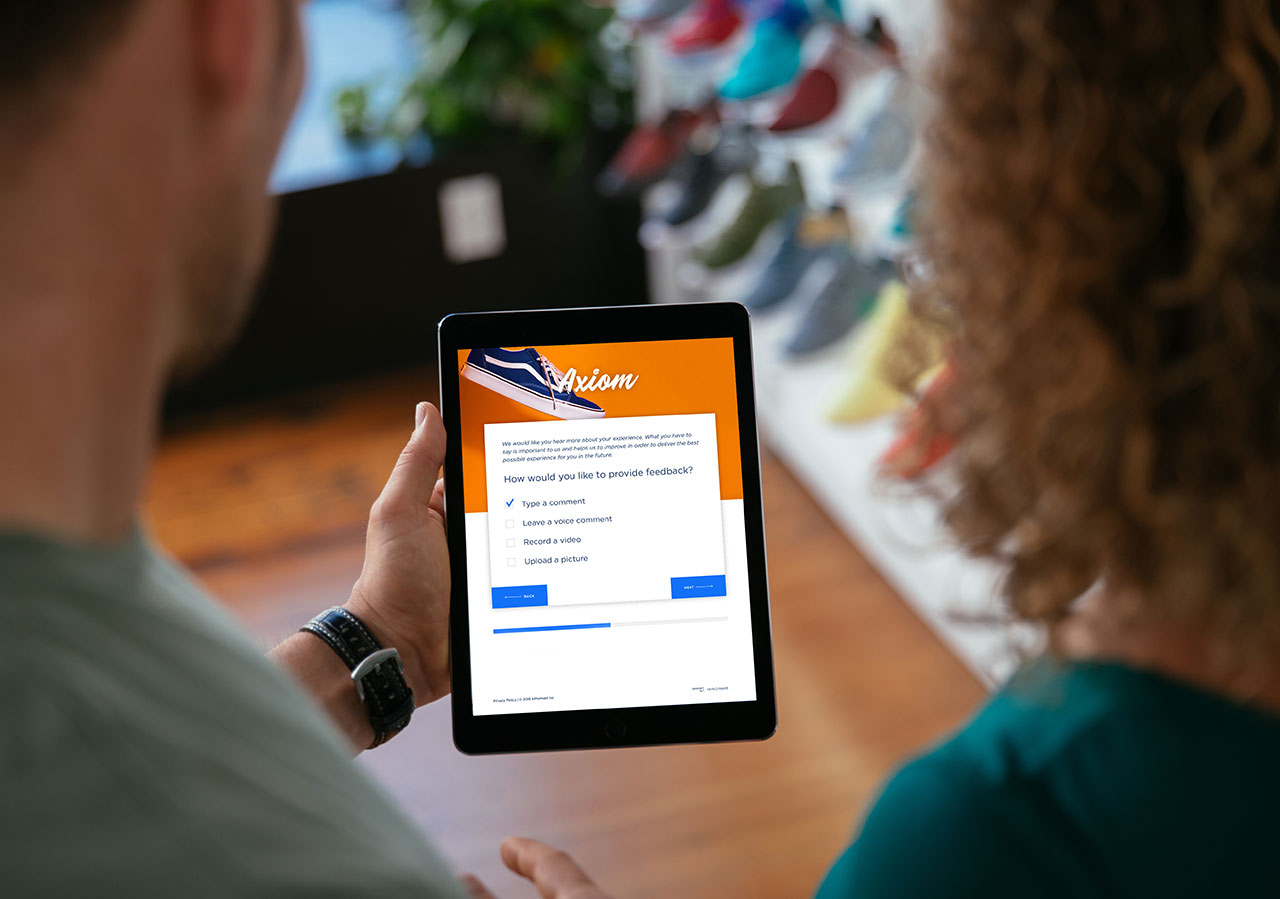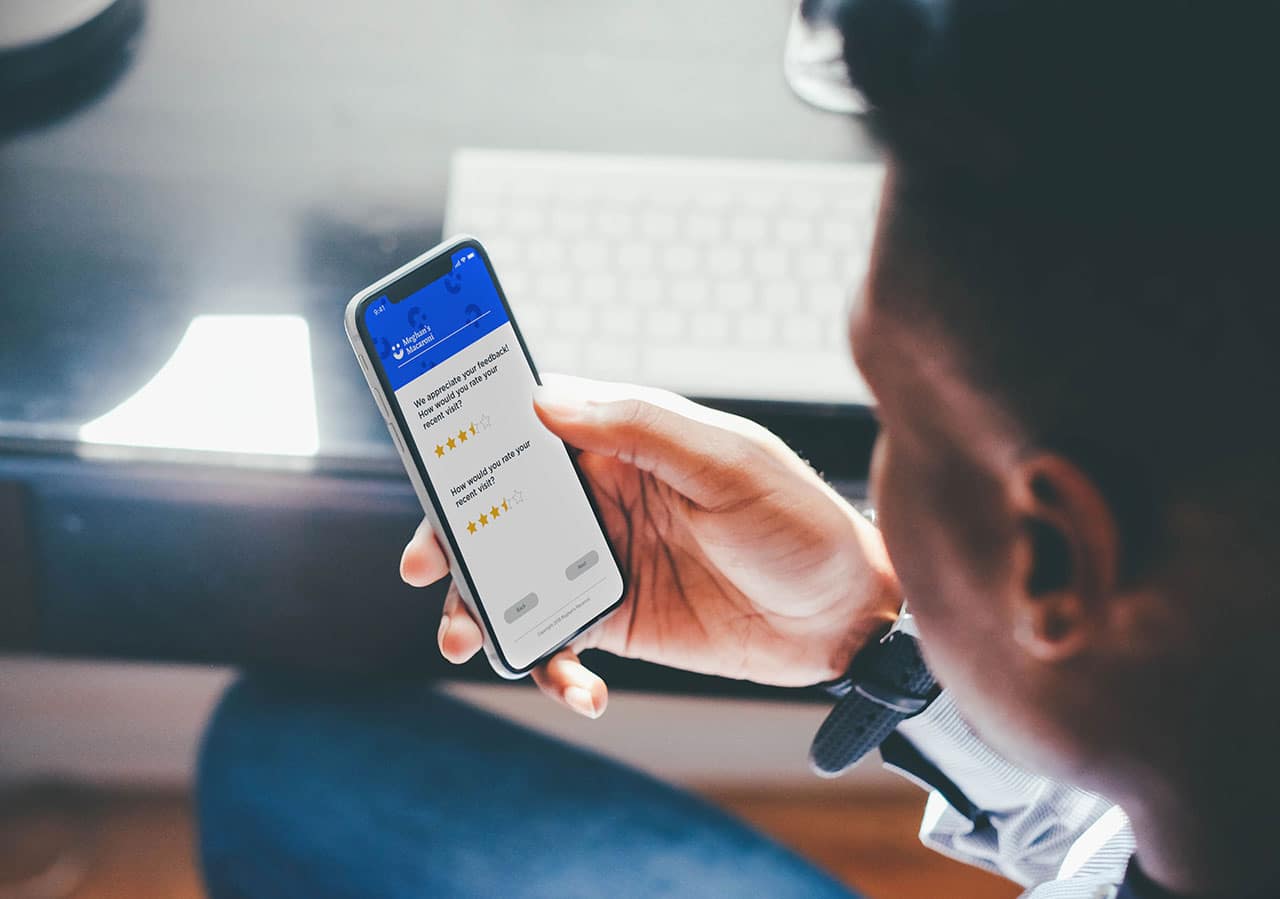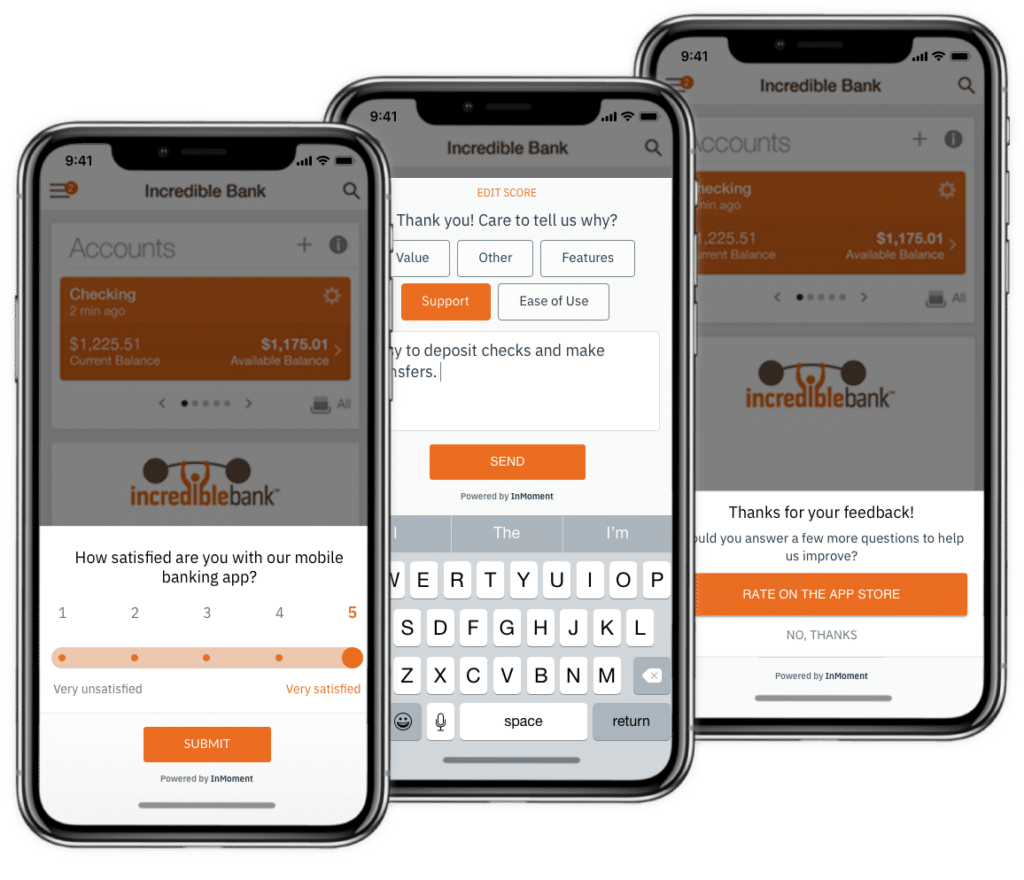
How do you respond when someone asks, “Are you doing okay today?” What if someone asked, “How do you feel today?” Most likely, you would answer these two questions slightly differently. One question asks you just generally how you feel while the other implies that you might not be doing well in the first place, so you might answer differently. There was bias in the wording of one question while the other stayed more open-ended.
You have possibly come across this phenomenon in your customer surveying experiences. Asking the right question to get responses from customers is crucial to making surveys a valuable tool. When your business decisions are influenced by the feedback you get in customer surveys, it’s even more important to make sure you’re asking the right questions to get the right feedback. But what are the right questions to ask? Read on to learn more about the different types of customer survey questions and what questions can help you get the most valuable feedback.
What Are the Different Types of Customer Survey Questions?
There are different types of questions you can ask customers for different types of surveys. A great survey will include a variety of questions to gather a variety of feedback. Depending on your goal for the feedback, you’ll want to focus on different aspects of the problem you’re exploring. We’ll walk you through four different types of survey questions to consider.
Open-Ended Questions
If you’re looking for deeper insights, open-ended questions can be extremely beneficial. These questions will include a section for customers to fill in or answer with more in-depth thoughts. These types of questions are sometimes more complex and can’t be answered in a word or two. The feedback you collect may also be complex, so it’s important to have a good way to understand and utilize the data. When you get longer answers, it can be difficult to mine for the key insights, so it’s important to have a strong analytics system in place.
Open-ended questions also run the risk of customers choosing to skip these questions. These questions require more thought and effort to write up or talk about their answers that some customers may choose to go onto the next question. So open-ended questions can be extraordinarily valuable, but they need to be used sparingly to help customers finish the survey. Save open-ended questions for the insights you need that can’t be gathered from another question type.
Yes or No Questions
While open-ended questions can provide deep insight, simple questions still serve a valuable purpose in a customer survey. A yes or no question just asks customers to select an option between yes or no. These questions are simple for customers to answer, so very few will skip the question. The main drawback of this type of question is that it will only provide a little information about how the customer feels about a topic. But, despite that, these questions prove valuable to revealing a problem. For more insight, you may need a follow-up question, but a simple yes or no question can still give you a good idea of where a problem may lie.
Options Questions
Options questions are another simple question type that gets more specific than just yes or no questions. For these types of questions, customers will choose from a predetermined set of options. Sometimes it’s beneficial to allow customers to select more than one option, and you should make that clear to customers. Option questions are also often very useful to find insight into if something is a problem—without requiring too much effort on the customer’s part to answer the question. The data you gather from options questions can be more manageable since it’s already decently organized, and the insights can still be incredibly valuable.
Scale Questions
Scale questions allow customers to slide or select a numeric value that aligns with their answer. Often these numbers are attached to an answer or feelings. For example, a scale question might have three numbers for disagree, neutral, and agree. Scale questions give less detailed insight than open-ended questions, but they can give more detail than some yes or no questions. Scale questions, though, can involve more effort on the part of the customer—depending on how complex the scale is. On the other hand, scale questions data is very easy to use, find the average of, and begin implementing.
Overall, these are some of the types of questions that many people use in customer surveys. All of these questions can be utilized in many different survey formats. These are some of the most common survey formats used.
Survey Formats
- Email surveys. These surveys typically include a link to questions that target a customer’s experience. Sometimes email surveys come after a purchase or to just check in with customers at any point in their journey. These online surveys are usually easy for customers to respond to, but sometimes the extra step of following the link can lose some customers and potential respondents.
- Pop-up surveys. Instead of sending out an email, you could use a pop-up survey to ask customers about their experience. For example, after a purchase, you might have a brief pop-up survey that asks them to rate their experience and to illustrate any challenges they faced on your website.
- Exit surveys. When a customer decides to leave your company, an exit survey can be a valuable tool to find out why. These are often online surveys that pop up after a customer unsubscribes, or they could be email surveys that are delivered when a customer hasn’t purchased a product in a long time.
- Receipt surveys. If you use a brick and mortar store, you probably hand out receipts to most customers. A link to a survey on the receipt can be a way to learn more about customers’ experiences. These links also work well for digital receipts.
- Comment card surveys. These surveys are an old staple, but they’re a staple for a reason. Using pen and paper, you can leave physical cards for customers to fill out and leave comments on their experience. It can take more of your time to enter this data (as online surveys are fairly simple to begin analyzing), but this survey type can reach other customers online surveys may not.
- In-store surveys. If you have a brick and mortar store, you can set up a survey system inside the store. Kiosks by entrances and exits are a great way to reach customers who may not subscribe to your email list or visit your website.
What Are the Top Customer Questions to Get the Most Valuable Feedback?
The type of question and the format of the survey all influence how customers may respond, but the actual content of the questions can also have a large impact on how customers respond. What are the most valuable questions to ask in a survey? These are some of the main categories of questions and the specific questions that can help you get the most valuable feedback from customers.
Demographic Questions
- What is your name? This question is simple for customers to answer and can give you a way to organize the rest of the data you collect.
- What is your age/gender? These are more simple questions that customers likely won’t skip, but they can help you determine if there are any trends among certain demographics for your products or services.
- Where do you access your news? Understanding where your customers are going for information can help you determine where they could come across your products and how to best reach them in the future.
Psychographic Questions
- Do you prefer reading online or through a physical copy? Knowing where your customers want to get their information is important to know how to reach certain groups of customers and potential customers. If you know that your customers like to read physical copies, you’ll know it could be advantageous to have physical copies of materials for customers.
- How do you prefer to receive information? It can be valuable to simply ask how your customers prefer to receive information from you. If you know how they want to receive information, you can then focus your efforts on particular channels.
For Marketing
- How did you learn about our company? If you know how your customers learned about your company, you can begin focusing your marketing efforts on particular areas to reach more potential customers.
- How often do you use our product/service? Knowing when your customers use your products can help you find the specific areas where you could improve your marketing efforts to reach your customers. For example, if you learn your customers use your products or services three times a week, you could better market to future customers about how your products could be used.
- What made you decide to purchase from us? Learning about what drew customers to go through with a purchase can help you know where and how to enhance that to draw more customers through the marketing funnel and to commit to purchasing.
For the Website
- Have you used our website before? This question is simple and takes little time for customers to respond to, but it can inform you on whether or not customers use your website in the first place.
- Did you find what you were looking for on the website? It’s important to know how easy it is to navigate your website and how easy it is for customers to find what they’re looking for. It’s even more important to know if customers aren’t finding what they’re looking for, so you can begin to improve your website to facilitate ease and help customers make purchases.
- What would you change about the website? Customers may point out weak places on your website, or they might point out little points that could’ve prevented them from going through with a purchase. Knowing these things can help you fine tune your website to enhance the customer experience.
For Product Improvements
- Which features do you love about this product? If you know what customers love, you’ll know what’s working well. If you know what’s working well, you’ll be better able to improve your products to enhance what works. If customers love a particular part of your product, you can bring that out more, adjust the parts that aren’t working, and add what customers love to new products.
- What would you change about the product? If a customer would change something about the product, it’s worth knowing about. Those suggestions can help you pinpoint areas for improvement and how a customer might like to see the product improved.
- What do you like the least about this product? Asking customers about what they don’t like can show you where the weak spots are with your product, so you can begin finding the right ways to improve it.
For Products That Aren’t Selling
- What challenges are you trying to solve with this product? If you know why a customer bought the product, you can figure out how you might market the product that isn’t selling better. For example, if customers use a product that’s not selling well to solve a problem that you hadn’t intended the product for, you could shift marketing to begin targeting customers with that particular problem.
- What would have stopped you from buying the product? If you know where a customer would have given up, you can work to keep future customers from stopping at that point.
- Do you feel that the product is worth the cost? Sometimes a product isn’t selling because the price doesn’t match the product. Knowing this can help you adjust and find ways to make a product be successful.
To Measure Customer Experience
- How likely are you to recommend this product or service? This simple question has customers rank the likelihood of recommending the product on a scale of 1 to 10. Ultimately, this question can help you determine your Net Promoter Score.
- How satisfied are you with your experience with our company? You likely want to know how satisfied your customer is with your company and products, and customer satisfaction survey questions can help you understand that. Using this survey question can also help you determine your Customer Satisfaction score.
- How well did our company help you handle an issue you had? Customers come across issues regularly, and your customer service representatives will often help them. It’s important to know how your team is working and where your customer effort score is.
5 Things Good Customer Survey Questions Should Do
Customer surveys play a pivotal role in understanding and improving the customer experience. The effectiveness of these surveys hinges on the quality of the questions posed. Let’s delve into the key attributes that define what good customer survey questions should do:
1. Elicit Specific and Actionable Responses
The hallmark of effective survey questions is their ability to extract clear and actionable feedback. Ambiguous or convoluted queries can muddy the waters, making it essential to craft questions that lead to precise and useful insights.
2. Address Relevant Topics
Good survey questions are purpose-driven, focusing on topics that directly align with the objectives of the survey. Whether gauging satisfaction levels or exploring product preferences, questions should be tailored to the specific goals at hand.
3. Consider the Customer’s Perspective
Crafting questions from the customer’s viewpoint is crucial. Language should be accessible, avoiding industry jargon or technical terms that might alienate respondents. Questions should resonate with customers, ensuring clarity and ease of understanding.
4. Encourage Honest and Unbiased Feedback
Neutral wording and a balanced approach characterize questions that elicit honest feedback. Customers should feel empowered to express their opinions candidly, even if they are critical. Minimizing bias in the questions contributes to the reliability of the responses.
5. Offer a Range of Response Options
Versatility in response formats—whether scales, multiple-choice, or open-ended—enables customers to express their sentiments in ways that suit them best. This flexibility enhances the richness of the data and ensures a comprehensive understanding of customer attitudes.
In essence, the success of customer survey questions lies in their capacity to generate actionable insights. By considering the customer’s perspective, maintaining clarity, and aligning questions with the survey’s objectives, businesses can gather valuable information to enhance their offerings and cultivate strong customer relationships.
Best Practices to Make Your Customer Questions More Fruitful
Once you have your survey questions designed, there are a few more best practices to keep in mind as you prepare your customer surveys:
- Always A/B test your surveys before sending them out to customers. It’s important to figure out what will work well in your survey early on.
- Make sure you ask satisfied customers and unsatisfied customers. Both types of customers will give you different results, so it’s important to ask both how they feel about something.
- Always ask short and relevant questions. Longer questions are complicated and hard to answer, and short questions will get your more response and better data.
- Send the surveys at the right time. Timing is key to nearly everything, including surveys. Research to determine when it would be best to send your particular surveys.
- Thank your customers for their feedback. People love to be valued for the work they do, so thanking your customers will help them feel valued and encourage them to respond to future surveys.
Overall, focusing on your survey questions can help you gain valuable feedback and insights from your customers. Surveys aren’t the only way to get information, but they are certainly a valuable tool to utilize. Asking the right survey questions reduces the bias that can come from wording questions in particular ways, which can lead to false information. Information gathered that is inaccurate, untruthful, or not useful can actually harm a company in the long run because there should always be a constant improvement.
Instead, it’s important to focus on choosing good survey questions that are both accurate and valuable. To learn more about how to improve your surveys, talk with an expert today!






